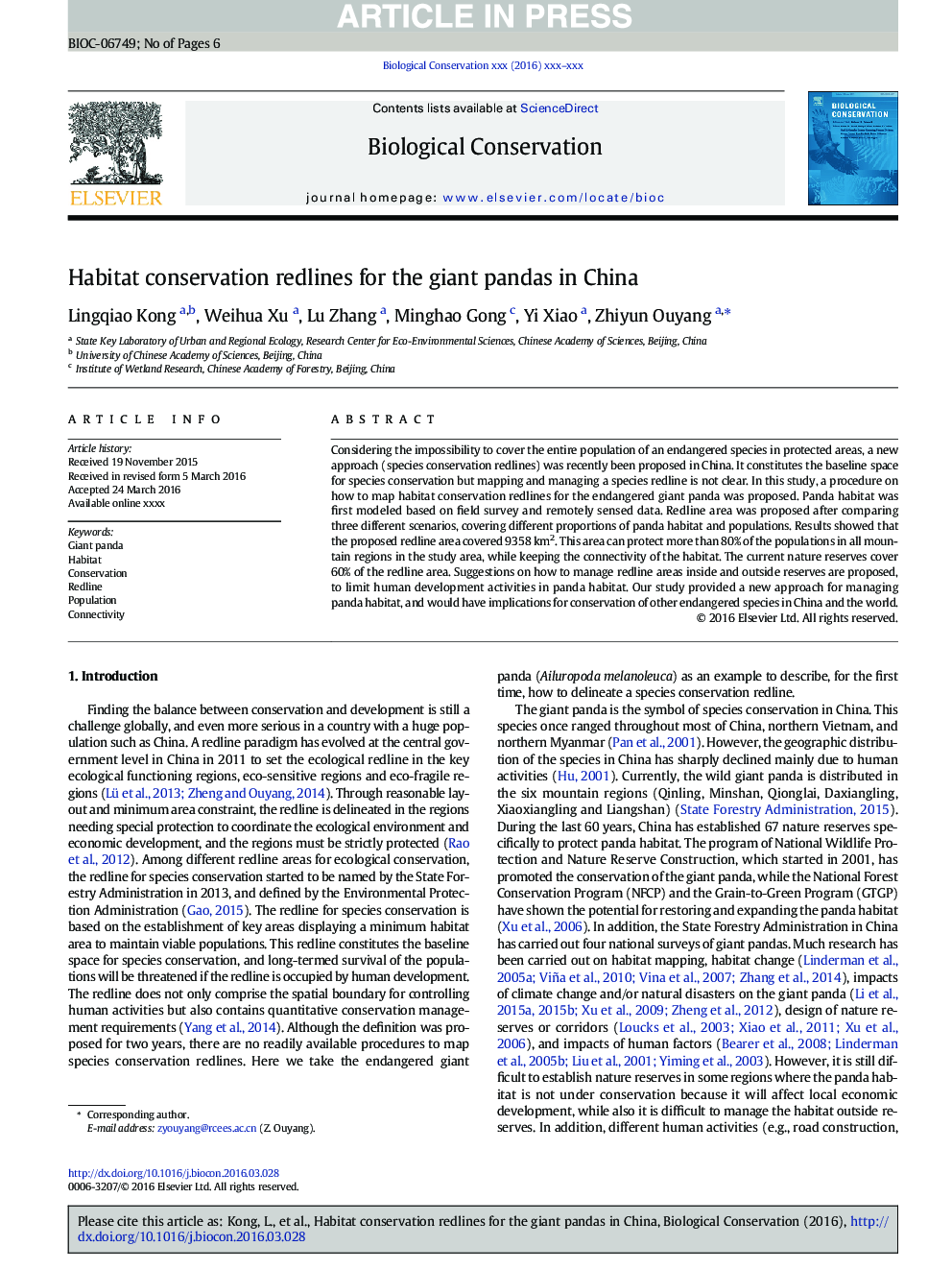| Article ID | Journal | Published Year | Pages | File Type |
|---|---|---|---|---|
| 5743164 | Biological Conservation | 2017 | 6 Pages |
Abstract
Considering the impossibility to cover the entire population of an endangered species in protected areas, a new approach (species conservation redlines) was recently been proposed in China. It constitutes the baseline space for species conservation but mapping and managing a species redline is not clear. In this study, a procedure on how to map habitat conservation redlines for the endangered giant panda was proposed. Panda habitat was first modeled based on field survey and remotely sensed data. Redline area was proposed after comparing three different scenarios, covering different proportions of panda habitat and populations. Results showed that the proposed redline area covered 9358Â km2. This area can protect more than 80% of the populations in all mountain regions in the study area, while keeping the connectivity of the habitat. The current nature reserves cover 60% of the redline area. Suggestions on how to manage redline areas inside and outside reserves are proposed, to limit human development activities in panda habitat. Our study provided a new approach for managing panda habitat, and would have implications for conservation of other endangered species in China and the world.
Related Topics
Life Sciences
Agricultural and Biological Sciences
Ecology, Evolution, Behavior and Systematics
Authors
Lingqiao Kong, Weihua Xu, Lu Zhang, Minghao Gong, Yi Xiao, Zhiyun Ouyang,
